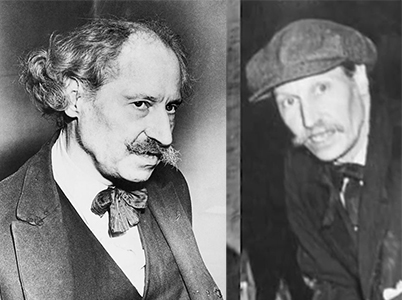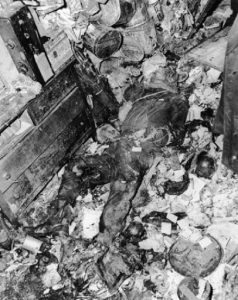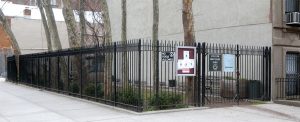Strange Deaths: The Collyer Brothers
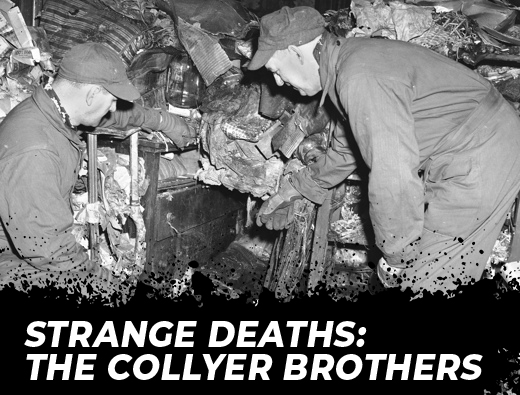
It was over 70 years ago that the Collyer Brothers’ bodies were discovered in their three story brownstone apartment. The apartment on 2078 Fifth Avenue in Harlem had a reputation for being an eyesore. The two brothers were aggressive about their privacy, spurring many rumors and scrutiny that led cops to believe Langley had fled Harlem after his brother’s death.
The Collyer Brothers, or any hoarder(s) during that time, would’ve hopefully been treated more compassionately today. Shows like Hoarders have desensitized Compulsive Hoarding Disorder as an intervenable condition, which has helped hoarding homes get help faster. Families now have easier access to resources and hoarding cleanup companies to help with intervention.
But, would the brothers have even wanted help?
Who were the Collyer Brothers?
Most know the duo for their apartment and strange death, not for the fact their story really began long before the situation came to a head. The duo was in the public eye long before things got weird. Their father, Herman, was a known community gynecologist, and their mother Susie Gray was a talented opera singer.
The brothers were wealthy and distinguished in the Harlem community from birth to adolescence. Both brothers were well educated and had prestigious degrees from Columbia University. Homer became a lawyer and Langley studied engineering and chemistry. Langley was also an accomplished pianist, having performed at Carnegie Hall before resigning to sell grand pianos from their Harlem brownstone.
Did you know?
The brothers were related to Robert Livingston, a passenger aboard one of the earliest colonial ships to set sail from England to the Americas.
The Downward Spiral
It all seemed to go downhill when they inherited his father’s possessions in the wake of his death. After his mother passed, he crammed both their possessions and his father’s medical practice into their 1,500 square foot three story Harlem brownstone.
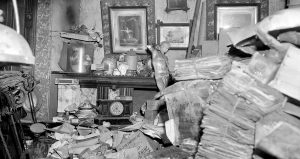
Stacks of newspapers, along with other personal items inherited by the brothers, 1947.
Slowly, over time, Langley became less seen as the neighborhood changed during the Great Depression. He became almost nonexistent in 1933, the same year brother Homer went completely blind in both eyes. Langley quit his job to care for his brother full time, bathing him and feeding him a diet of peanut butter, black bread, and 100 oranges a week. He left the house only after midnight, sometimes strolling as far as 6 miles to get bread for his brother. He would also bring home newspapers, explaining to reporters “when Homer regains his sight, he can catch up on the news”.
Homer never regained his eyesight. In fact, Homer was eventually paralyzed from rheumatism and became completely dependent on his brother.
The brothers were skeptical of doctors. Langley once told a reporter:
“[…] you must remember that we are the sons of a doctor. We have a medical library of 15,000 books. We decided we would not call in any doctors. You see, we knew too much about medicine.”
Rheumatology was an emerging field in the 1940s. The cause of rheumatism still isn’t clear, but it is definitely known to worsen without treatment. Though Homer didn’t ultimately die of rheumatism, letting his brother be seen by doctors probably wouldn’t have hurt.
Did you know?
In 1941, firemen were called to the mansion to extinguish a small fire that broke out in the apartment. Langley refused to let any of the firemen see or talk to his brother.
How did the Collyer Brothers die?
On March 27, 1947, an anonymous tipster phoned the police about a “dead body smell” emanating from the mansion. Suspecting it to be another rumor, the 122nd precinct sent a patrol officer to the house. There were issues getting into the house. The doors were locked, there was no doorbell, the windows were boarded up or covered by iron grillwork, and Langley had stopped paying for the telephone years prior. He had also set up small clearings within tunnels rigged with booby traps to deter intruders that had been trying to break into the brownstone for years.
Eventually, an emergency squad broke a window on one story and started to throw out some of the junk that blocked the clearing. The team found the most obscure junk in the mansion–half a sewing machine, parts of a wine press, a two headed baby doll, a human skeleton, stacks of newspapers, pickled human organs, old umbrellas tied together, and many empty boxes. After almost half a day of digging, Homer’s body was found dead in a bathrobe that had seen its better days, body hunched over and head resting over his knees. Examiners determined he’d died due to starvation and heart disease ten hours before his body was discovered.
Where was Langley?
The discovery of Homer’s body led to the circulation of many rumors regarding his brother’s whereabouts. Rumors began to spread about his brother boarding a New Jersey bus for Atlantic City. The police assumed he had fled the state in guilt of his brother’s death, phoned in the tip anonymously, and fled the state. Rumors regarding his whereabouts circulated like crazy, with multiple state officials dispatching officers in search of Langley.
When he didn’t appear at his brother’s funeral, it started to become clear that he may not have fled the way the police originally thought. Indeed, 18 days after clearing the junk out of the Collyer home, Langley’s body was found under a suitcase, bundles of newspapers, and three metal bread boxes.
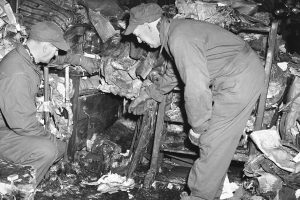
Detectives Joe Whitmore, left, and John Loughery examining the body of Langley Collyer, 61-year-old recluse, in a tunnel of his own junk ten feet from his brother Homer Collyer. Upper Fifth Avenue, New York, April 8, 1947. (AP Photo/John Lindsay)
What happened after Langley died?
His body had been partially eaten by rats. In 1947, forensic investigation was nowhere near where it is now, but his case was obvious even today. Parasites and vermin, especially rats, feast on a dead body in the later stages of death. The smell is also very distinct. The tip about the dead body smell was likely about his.
As he was not trained to treat his brother, and he had hid him from public, the ethical treatment is definitely questionable. But, is the circumstance excusable? He had died by his own bizarre circumstances, perpetrated by a highly misunderstood mental illness. Would he have recognized his own condition if compulsive hoarding was better understood? We can only speculate.
In the end, the police determined Langley had been trying to bring food to his brother when he had been caught in one of his own booby traps, suffocated under his own junk, and died.
Both brothers were buried in unmarked graves, the same lot as their parents.
The address at 2078 Fifth Avenue, New York was deemed a public health and safety hazard and razed the same year. In 1965, it was turned into a pocket park named after the brothers, at the protest of some neighbors.
Though the brothers had kept to themselves, this story launched compulsive hoarding into public consciousness and has since became one of the strangest deaths in history.


